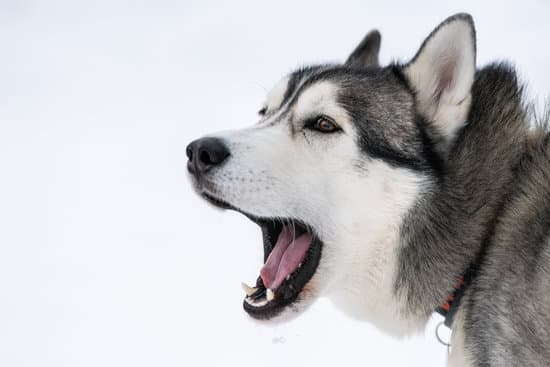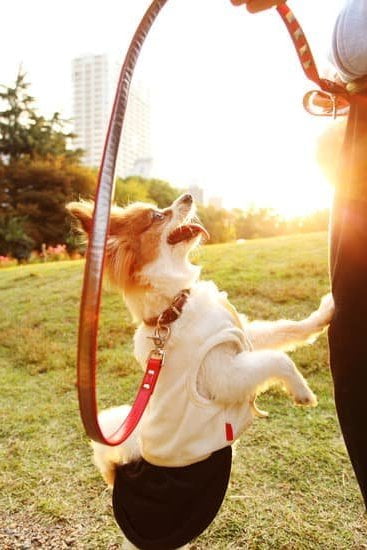Have you ever wondered how to train your dog to guard you and your home? Many dog owners consider their furry friends as part of their family and want them to serve not just as companions but also as protectors.
In this article, we will delve into the essentials of training your dog to become an effective guard dog. We will cover everything from understanding the role of a guard dog, choosing the right breed, building trust and establishing leadership, basic obedience training, advanced techniques, recognizing threats, handling aggression responsibly, consistency and reinforcement, and maintaining your dog’s well-being.
Guard dogs play a crucial role in keeping their owners safe and providing a sense of security. However, not all dogs are suited for this task. Choosing the right breed is the first step in ensuring that your dog will be able to fulfill its role effectively. It’s important to understand that proper training goes beyond teaching basic commands; it involves building a strong bond between you and your canine companion based on trust and respect.
Throughout this article, we will provide valuable insights into the process of training a guard dog, including tips on recognizing potential threats and handling your dog’s aggression responsibly. Building a harmonious relationship with your guard dog is essential for maintaining its guarding skills while also prioritizing its overall well-being. So let’s get started on understanding how you can successfully train your loyal companion to become an efficient guardian.
Choosing the Right Dog Breed for Guarding
When it comes to training your dog to guard you, choosing the right breed is crucial. Not all dog breeds are suitable for guarding, and some excel in this role more than others. It’s important to consider the natural instincts, temperament, and physical attributes of the breed when selecting a dog for guarding purposes.
Understanding Guard Dog Breeds
Guard dog breeds are typically known for their loyalty, courage, intelligence, and protective nature. Some of the most popular guard dog breeds include German Shepherds, Rottweilers, Doberman Pinschers, Bullmastiffs, and Belgian Malinois. These breeds have been traditionally used for protection and security purposes due to their strong guarding instincts and capabilities.
Assessing Your Lifestyle and Needs
Before choosing a guard dog breed, it’s essential to assess your lifestyle and specific needs for a guarding companion. Consider factors such as the size of your living space, the amount of time you can dedicate to exercising and training your dog, as well as any existing pets or family members in the household. Different guard dog breeds have varying exercise requirements, grooming needs, and socialization tendencies that should align with your lifestyle.
Professional Guidance
Seeking advice from professional trainers or experienced breeders can also be beneficial when choosing the right guard dog breed. These individuals can provide valuable insights into the characteristics of different breeds and help you make an informed decision based on your specific circumstances. Additionally, they can offer guidance on how to properly train and care for a guard dog based on its breed-specific traits.
By carefully considering these factors and doing thorough research on various guard dog breeds, you can choose the best fit for your personal protection needs while also providing a fulfilling home environment for your four-legged guardian.
Building Trust and Establishing Leadership With Your Dog
When training your dog to be a guard, it is crucial to build a strong foundation of trust and establish yourself as the leader. This will not only help in the overall training process but also in creating a harmonious relationship with your dog. Here are some tips for building trust and establishing leadership with your dog:
1. Spend quality time together: Spending time with your dog, whether it’s through play, walks, or training sessions, will help strengthen the bond between you and your pet. This will also allow you to understand your dog’s behavior and personality better.
2. Consistent rules and boundaries: It is important to establish consistent rules and boundaries for your dog from the beginning. This will help them understand what behavior is acceptable and what is not, making it easier for them to follow commands during guard dog training.
3. Positive reinforcement: Using positive reinforcement techniques such as praise, treats, or toys can help build trust and confidence in your dog. It will also motivate them to follow commands and perform well during training sessions.
By focusing on these key elements of building trust and establishing leadership with your dog, you will create a strong foundation for successful guard dog training. Remember that patience, consistency, and understanding are essential when working with your furry companion.
Basic Obedience Training for Guarding
When training your dog to be a guard dog, it is essential to start with basic obedience training. This lays the foundation for all the advanced guarding skills you will be teaching your dog. Here are some key components of basic obedience training for guarding:
1. **Establishing Basic Commands**: Start by teaching your dog basic commands such as sit, stay, and come. These commands form the basis of all obedience training and are crucial for communicating with your dog during guarding scenarios.
2. **Leash Training**: Proper leash training is important for maintaining control over your dog in various situations. Teach your dog to walk on a loose leash without pulling or tugging, which will be especially helpful when guarding in public spaces.
3. **Socialization**: Obedience training should also include socialization with other people and animals. A well-socialized guard dog is less likely to react aggressively inappropriately and can better discern real threats from harmless situations.
Incorporating these basic obedience training principles will help you lay a solid groundwork for more advanced guarding skills that you will teach your dog as they progress in their training. Remember that patience, consistency, and positive reinforcement are key elements in successfully training your guard dog.
Advanced Guard Dog Training Techniques
Socialization and Exposure
One of the key aspects of advanced guard dog training is socialization and exposure. A well-trained guard dog should be comfortable and confident in various environments and around different people. Gradually exposing your dog to new experiences, people, and places will help build their confidence and ensure they remain calm and focused in different situations.
Targeted Aggression Training
While aggression can be a valuable trait in a guard dog, it’s crucial to channel and control this aggression effectively. Advanced training techniques involve teaching your dog to distinguish between potential threats and harmless situations. This targeted aggression training helps ensure that your dog only reacts aggressively when necessary, minimizing the risk of them becoming overly aggressive or reactive in non-threatening situations.
Specialized Task Training
In addition to basic obedience commands, advanced guard dog training may include specialized task training. This can involve teaching your dog specific guarding behaviors such as patrolling a designated area, responding to specific commands for different threat levels, or accompanying you on walks or runs while maintaining a protective stance. These specialized tasks enhance your dog’s guarding abilities and make them more effective in protecting you and your property.
By incorporating these advanced guard dog training techniques into your training regimen, you can further enhance your dog’s skills as a reliable guardian while ensuring they remain well-balanced and disciplined. As with any advanced training, patience, consistency, and positive reinforcement are essential for success.
Teaching Your Dog to Recognize Threats
One of the key aspects of training a guard dog is teaching them to recognize potential threats. This involves helping your dog distinguish between normal, everyday occurrences and actual dangers. To start this training process, it’s important to expose your dog to various situations and stimuli that may indicate a potential threat. This can include introducing them to unfamiliar people, loud noises, or unexpected movements.
It’s crucial to observe your dog’s behavior during these exposures and pay attention to any signs of alertness or suspicion. When your dog displays signs of unease or signals that they have detected a potential threat, it’s essential to reward this behavior with praise and possibly even a treat. This positive reinforcement helps solidify the connection in your dog’s mind between their perception of a threat and the appropriate response.
In addition to rewarding your dog for recognizing potential threats, it’s also important to reinforce their training through regular practice and consistency. By providing ongoing opportunities for your dog to apply their threat recognition skills in different settings, you can help them develop a strong sense of when to be on alert and how to respond appropriately.
Ultimately, teaching your guard dog to recognize threats is a crucial component of their overall training as it equips them with the ability to fulfill their protective role effectively.
| Training Tips | Benefits |
|---|---|
| Expose your dog to various situations and stimuli | Helps solidify the connection in your dog’s mind between perception of a threat and appropriate response |
| Reward alertness or suspicion with praise and treats | Reinforces the training by creating a positive association with recognizing threats |
| Regular practice and consistency in providing opportunities for applying threat recognition skills | Equips the guard dog with the ability to fulfill its protective role effectively |
Handling Your Dog’s Aggression Responsibly
When training your dog to be a guard dog, it is essential to address the issue of aggression in a responsible manner. While aggression can be a desirable trait in a guard dog, it must be channeled and controlled effectively.
The first step in handling your dog’s aggression is to understand the difference between protective behavior and excessive aggression. Protective behavior is when a dog shows signs of guarding its owner or property, while excessive aggression is when the dog becomes overly hostile and uncontrollable.
One way to handle your dog’s aggression responsibly is to provide proper socialization from an early age. Exposing your dog to different people, animals, and environments can help prevent fear-based aggression and promote confidence in your dog. Additionally, setting clear boundaries and rules for your dog will help establish you as the leader and prevent aggressive behavior stemming from insecurity or confusion.
Another important aspect of managing your dog’s aggression is through obedience training. Teaching your dog basic commands such as “sit,” “stay,” and “leave it” can help control their impulses and redirect their focus when feeling threatened or provoked. It is crucial to avoid using punishment-based methods to address aggression, as this can exacerbate the problem and lead to fear or further hostility.
| Aspect | Recommendation |
|---|---|
| Socialization | Expose your dog to various people, animals, and environments. |
| Obedience Training | Teach basic commands such as “sit,” “stay,” and “leave it.” |
| Avoid Punishment | Avoid using punishment-based methods to address aggression. |
Consistency and Reinforcement
Once you have successfully trained your dog in basic obedience and advanced guarding techniques, it is crucial to maintain and reinforce these skills to ensure that your dog remains an effective guard dog. Consistency is key in maintaining guarding skills, as any lapse in training can result in a decrease in your dog’s ability to protect you and your property.
Reinforce the guarding skills by regularly practicing obedience commands and guarding techniques with your dog. Consistency in training will help your dog retain the knowledge and skills they have learned, reinforcing their role as a guard dog. Set aside time each day for reinforcement training to keep your dog sharp and ready to respond to any potential threats.
In addition to regular reinforcement of guarding skills, it is important to provide ongoing mental stimulation and physical exercise for your guard dog. A well-exercised and mentally engaged dog will be more alert, responsive, and better equipped to carry out their duty as a protector. Whether it’s through playtime, challenging activities, or new experiences, keeping your guard dog stimulated will contribute to their overall well-being and effectiveness in their role.
Maintaining a Balanced Well-Being for Your Guard Dog
Once your dog has been trained to guard you, it is important to ensure that they have a balanced well-being. A guard dog that is stressed, anxious, or unhealthy will not be able to perform their duties effectively. One way to maintain your guard dog’s well-being is by providing them with regular exercise. A tired dog is a happy and content dog, and regular exercise can help reduce stress and anxiety in your guard dog.
Another aspect of maintaining a balanced well-being for your guard dog is ensuring that they have proper nutrition. A healthy diet that meets the specific nutritional needs of your guard dog breed is essential for their overall health and well-being. Consult with your veterinarian to make sure that you are providing the best possible nutrition for your guard dog.
In addition to physical health, mental stimulation is also crucial for maintaining a balanced well-being for your guard dog. Provide them with toys, puzzles, and activities that keep their mind engaged and prevent boredom. This can help prevent behavior issues and keep your guard dog happy and mentally stimulated. By paying attention to the physical, nutritional, and mental needs of your guard dog, you can ensure that they remain healthy, happy, and capable of performing their guarding duties effectively.
Conclusion
In conclusion, having a well-trained guard dog can provide you with a sense of security and peace of mind. By following the steps outlined in this guide, you can train your dog to be a reliable protector and companion.
Remember that training a guard dog requires time, patience, and consistency. It is important to choose the right breed, establish trust and leadership, and provide proper obedience training to ensure that your dog is well-prepared for its role as a guardian.
Additionally, advanced training techniques such as teaching your dog to recognize threats and handling its aggression responsibly are crucial for developing a well-rounded guard dog. By maintaining consistency and reinforcement in your training efforts, you can help your dog maintain its guarding skills over time. However, it is equally important to prioritize your guard dog’s balanced well-being by providing regular exercise, mental stimulation, and proper care.
Ultimately, enjoying the benefits of a well-trained guard dog means having a loyal and protective companion that adds an extra layer of security to your home or property. With the right training and care, your guard dog can become an integral part of your life while providing you with peace of mind and protection from potential threats.
Frequently Asked Questions
How Do You Train a Dog to Be Protective of You?
Training a dog to be protective of you starts with establishing leadership and trust. Teaching basic commands like “sit,” “stay,” and “come” can create a foundation for obedience. Socializing the dog with different people and environments can help build confidence. Obedience training with a professional can also enhance the dog’s protective instincts while still maintaining control.
How Do I Make My Dog More Protective and Aggressive?
Making a dog more protective and aggressive is not necessarily recommended, as aggression can lead to dangerous behavior. Instead, focus on building the dog’s confidence, ensuring proper socialization, and providing clear leadership. Engaging in activities like agility training or advanced obedience can channel the dog’s energy in productive ways without promoting aggression.
Can My Dog Become a Guard Dog?
Any dog has the potential to become a guard dog given the right training and guidance from their owner. Breeds known for their guarding instincts may have a natural inclination towards this role but it ultimately comes down to the individual dog’s temperament and training.
Proper socialization, obedience training, and clear leadership are key factors in shaping a guard dog’s behavior and skills.

Welcome to the blog! I am a professional dog trainer and have been working with dogs for many years. In this blog, I will be discussing various topics related to dog training, including tips, tricks, and advice. I hope you find this information helpful and informative. Thanks for reading!





